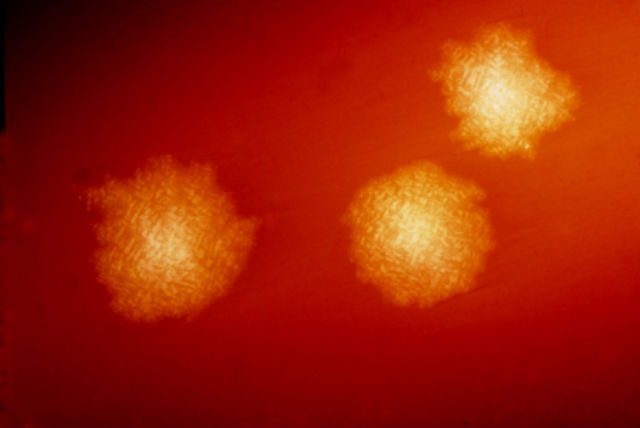Cleaning After C. Diff

Nausea. Fever. Diarrhea.
Sounds like a case of the flu, right? Maybe. What you’re dealing with could be just a bad virus that will leave your system in just a few days or it could be the signs of something more serious; something like C. diff, a highly contagious top three superbug. For this reason, cleaning after C. diff is best left to professionals with the experience, chemicals, and equipment for cleaning areas impacted by superbugs and communicable diseases.
What is C. diff?
According to the CDC, C. diff is described as: “a bacterium that causes inflammation of the colon, known as colitis.” The bacterium is called Clostridium difficile (C. difficile, or C. diff), and as it grows, it releases toxins that attack the lining of the intestines, causing a condition called Clostridium difficile colitis. The CDC estimates that C. diff causes “almost half a million illnesses in the United States each year.” Cleaning after C. diff can be especially tricky because of how easily it can transfer from person to person.
What Are the Symptoms of C. diff?
Symptoms of the disease may be mild to severe and include fever, abdominal cramps, and prolonged diarrhea. Individuals are at greater risk of contracting C. diff if they:
- Are over the age of 65
- Take antibiotics
- Have compromised immune systems
Is C. diff a Communicable Disease?
Yes, C. diff is a communicable disease. C. diff is present in stool and can spread person to person or by way of contaminated environments if the infected environments are not properly disinfected. The spores can also live on surfaces for several months, which is why hiring professional C. diff cleaners is critical to the health of those in contact with the infected environment.
Examples of How C. diff Can Spread
- Imagine you break your leg and go in for a minor surgery. Everything goes smoothly, but the nurse forgets to wear gloves when changing your dressing. You could catch C. diff.
- You have a cold and the doctor prescribes antibiotics. These weaken your immune system. Your chance of getting C. diff increases.
- The public restroom you just used is out of soap. You run some water on your hands and plan to use some antibacterial when you get in your car. Meanwhile you touch your keys, your wallet, and your steering wheel. Despite your good intentions, you may already have C. diff.
C. diff is found in feces and is transmitted by touch – if you come into contact with an infected surface, then touch your mouth or nose, the disease can enter your body through the mucous membranes. It can also be passed by touching an infected person, which is why it is so prevalent in healthcare settings and in places where sick people common gather. People with compromised immune systems, including the elderly, are at an increased risk of catching this illness.
Why is C. diff More Dangerous Than The Flu?
C. diff is classified by the CDC as an “Urgent Threat,” due to its widespread nature and ease of transmission. One of the worst aspects of C. diff is its duration. Without proper medical care, the illness will last much longer than most flus, sometimes lasting weeks. Also, the intensity of the symptoms, especially diarrhea, can be dangerous, leading quickly to dehydration. Furthermore, C. diff is difficult to kill. The CDC warns that the C. diff bacteria is known to be resistant to several common antibiotics. Proper and professional treatment of both the individual and their surroundings is necessary in order to prevent the disease from spreading and impacting others.
If Someone You Know Has C. diff
When you get sick, you go to the doctor. But what do you do if your home is also affected?
If you or someone you love becomes infected with the C. diff bacteria, your first instinct will be to ensure the patient receives proper medical care. Following that, be sure to protect the rest of your home and prevent any reinfection, which is much harder to treat than the first infection, by having your home thoroughly cleaned by professional C. diff cleaners like Aftermath.
This precaution is especially important if the ailing person shares a bathroom with others, or if there are small children or elderly in the home. Even if surfaces like faucets and sinks appear clean, C. difficile can be incredibly resistant to household cleaners and disinfectants. A traditional house cleaning may not be enough to defeat the illness and you don’t want to risk your family’s health.
C. diff Cleaning Procedures
For cleaning after C. diff we adhere to OSHA’s bloodborne pathogen regulations and practice universal precautions to protect our employees and our customers.
Science-based C. diff cleaning process:
- Complete an initial walk-through and OSHA-mandated employee-safety hazard assessment of the scene infected with C. diff.
- Follow OSHA’s recommended cross-contamination protocol to control the impacted area by securing and separating the infected area from other parts of the structure.
- Remove all visible traces of biological materials from the area. This is the most dangerous step of C. diff cleaning because of the direct contact with infected surfaces.
- After removal, we thoroughly clean, disinfect, and deodorize infected surfaces using EPA-rated disinfectants.
- In the final step of the C. diff cleaning process we use adenosine triphosphate (ATP) testing technology to guarantee hospital-level standards of disinfection to ensure the safety of you and your family.
Aftermath Services has been cleaning homes and businesses affected by C. diff and other bacteria since 1996. Our offices are conveniently located nationwide, and teams of trained technicians are available 24/7 to see to your needs. If you have any questions, or would like to schedule a C. diff cleaning contact us today.
 877-872-4339
877-872-4339  Contact Us
Contact Us 






